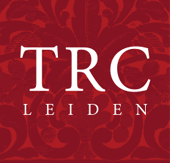Looms are used to weave textiles. Weaving itself “is a process of interlacing two or more sets of thread, according to a pre-defined system, to produce a cloth.” (Vogelsang-Eastwood 1993). Loom weights are the most direct evidence of the use of a specific type of loom, the warp-weighted loom (a type of vertical loom). A warp-weighted loom, at its simplest, consists of a stick or bar (called a cloth beam) at the top supported by upright poles on each side. The entire frame frequently leans against a wall. Warp threads are secured at the top bar, so that they hang down freely. Loom weights are then attached at the bottom to bundles of warp threads to keep them taut. The weaver or weavers stand in front of the loom and work with their arms raised. The shuttle with a weft thread is passed to the left and right, under and over the warp threads, in order to produce a textile. The woven material is pushed towards the top of the loom as it is produced. The width of the frame determines the maximum potential width of the textile.
This type of loom is at least 4,000 years old. Some researchers think that the warp-weighted loom originated in Central Europe and then spread east, towards the Aegean area, and through ancient Anatolia to the Near East. The exact origin and spread are, however, still debated. It is clear that the warp-weighted loom was used extensively throughout Europe and the Near East. Its structure and use are falso amiliar from ethnographic studies. In the 1950s, the Norwegian scholar Marta Hoffman, of the Norsk Folkemuseum, Oslo) found women in Lappish Norway and Finland still weaving certain textiles, and in particular heavy woollen bed spreads, on warp-weighted looms (Hoffman 1964).
 Illustration of Penelope at her loom, on a skyphos from Athens, found in an Etruscan tomb at Chiusi, From: Monumenti d. Inst. Archeologico, IX., pl. xlii.Two silent black and white films showing the use of a Norwegian warp-weighted loom are available on YouTube. Both are from the Norsk Folkemuseum, where Hoffman worked as curator. The first film (NF.Film-10517), made by Marta Hoffman in 1956, is 26.5 minutes long. The second (NF.Film-10484) dates from 1947 and is 10.11 minutes long.
Illustration of Penelope at her loom, on a skyphos from Athens, found in an Etruscan tomb at Chiusi, From: Monumenti d. Inst. Archeologico, IX., pl. xlii.Two silent black and white films showing the use of a Norwegian warp-weighted loom are available on YouTube. Both are from the Norsk Folkemuseum, where Hoffman worked as curator. The first film (NF.Film-10517), made by Marta Hoffman in 1956, is 26.5 minutes long. The second (NF.Film-10484) dates from 1947 and is 10.11 minutes long.
There are many depictions of warp-weighted looms on ancient Greek vases. Such depictions may not be technically accurate in detail, as the vase painters were probably not weavers themselves. But representations of warp-weighted looms on vases point to the widespread use of such looms. One famous vase, a lekythos (a terracotta oil flask) attributed to the Amasis Painter, depicts five groups of women processing wool (a picture of the vase can be seen at here). One image is of a warp-weighted loom. Two black-figured women weave upwards by standing in front of this upright loom. Its warp threads are clearly separated and attached to loom weights (Edmunds 2016).. According to the weaver, Susan T. Edmunds, a loom weight shaped like that on the vase, complete with a metal ring, is now in the British Museum.(Edmunds 2016).


Different types of looms may have been used during different periods. On mainland Greece, loom weights seem to disappear during the Middle Bronze Age, despite being found both before and after this period. Yet spindle whorls (examples from the TRC collection include numbers TRC 2014.0802 and TRC 2014.0803, which are used to produce thread, are still plentiful, indicating that textiles were still being produced. Exactly why loom weights disappeared during this period is a mystery, but it may indicate that another type of loom, one that did not need weights, was in use (Barber1991:308)

